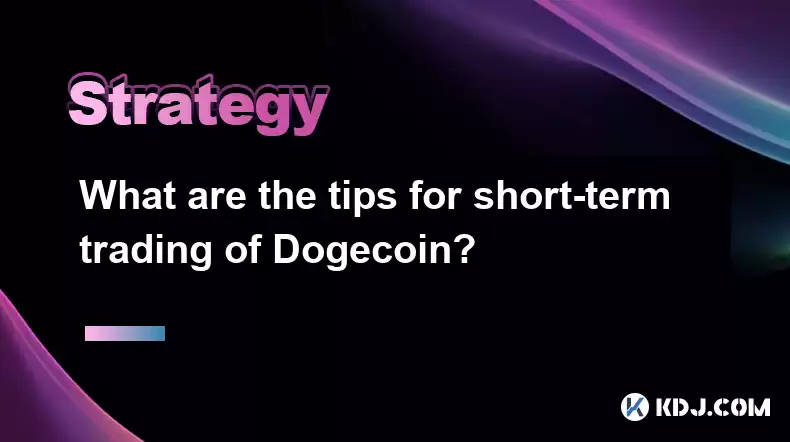-
 Bitcoin
Bitcoin $117500
2.15% -
 Ethereum
Ethereum $3911
6.19% -
 XRP
XRP $3.316
10.79% -
 Tether USDt
Tether USDt $1.000
0.01% -
 BNB
BNB $787.2
2.24% -
 Solana
Solana $175.2
4.15% -
 USDC
USDC $0.9999
0.00% -
 Dogecoin
Dogecoin $0.2225
8.40% -
 TRON
TRON $0.3383
0.28% -
 Cardano
Cardano $0.7868
6.02% -
 Stellar
Stellar $0.4382
9.34% -
 Hyperliquid
Hyperliquid $40.92
7.56% -
 Sui
Sui $3.764
7.63% -
 Chainlink
Chainlink $18.48
10.66% -
 Bitcoin Cash
Bitcoin Cash $582.1
1.88% -
 Hedera
Hedera $0.2601
6.30% -
 Avalanche
Avalanche $23.33
4.94% -
 Ethena USDe
Ethena USDe $1.001
0.02% -
 Litecoin
Litecoin $122.3
2.04% -
 UNUS SED LEO
UNUS SED LEO $8.969
-0.27% -
 Toncoin
Toncoin $3.339
0.86% -
 Shiba Inu
Shiba Inu $0.00001287
4.30% -
 Uniswap
Uniswap $10.43
7.38% -
 Polkadot
Polkadot $3.861
5.08% -
 Dai
Dai $1.000
0.02% -
 Bitget Token
Bitget Token $4.513
3.41% -
 Monero
Monero $267.7
-6.18% -
 Cronos
Cronos $0.1499
4.14% -
 Pepe
Pepe $0.00001110
5.15% -
 Aave
Aave $284.9
8.28%
What are the tips for short-term trading of Dogecoin?
To succeed in short-term Dogecoin trading, understand market dynamics, use reliable platforms, develop strategies like scalping, and manage risk with stop-loss orders and diversification.
Apr 19, 2025 at 04:43 pm

What are the tips for short-term trading of Dogecoin?
Short-term trading of Dogecoin can be an exciting yet challenging endeavor. To maximize your potential for success, it's crucial to understand the market dynamics and implement effective strategies. This article will delve into various tips that can help you navigate the volatile world of Dogecoin trading.
Understanding Dogecoin and Its Market
Dogecoin, originally created as a meme cryptocurrency, has gained significant attention and volatility in the market. Its price can fluctuate rapidly due to social media trends, endorsements by public figures, and general market sentiment. Understanding these factors is essential for short-term trading.
To start, familiarize yourself with the historical price movements of Dogecoin. Analyze past trends to identify patterns that could help predict future price movements. Additionally, keep an eye on market sentiment by following relevant social media platforms and news outlets. Dogecoin's price is often influenced by the buzz it generates online.
Setting Up Your Trading Environment
Before you begin trading, ensure you have a reliable trading platform. Choose a platform that offers real-time data, low transaction fees, and a user-friendly interface. Some popular options for trading Dogecoin include Binance, Coinbase, and Kraken.
Here are the steps to set up your trading environment:
- Register on a trading platform: Choose a platform and complete the registration process. This usually involves providing personal information and verifying your identity.
- Fund your account: Deposit funds into your trading account using a supported payment method, such as a bank transfer or credit card.
- Set up security measures: Enable two-factor authentication (2FA) to protect your account from unauthorized access.
- Familiarize yourself with the platform: Spend time navigating the platform's features, such as order types, charts, and trading tools.
Developing a Trading Strategy
A well-defined trading strategy is crucial for short-term trading. Here are some strategies you can consider:
- Scalping: This involves making numerous small trades throughout the day to profit from minor price movements. Scalping requires quick decision-making and a keen eye on market trends.
- Day Trading: Day traders buy and sell Dogecoin within the same trading day, aiming to capitalize on intraday price movements. This strategy requires a good understanding of technical analysis.
- Momentum Trading: This strategy involves buying Dogecoin when its price is rising and selling when it starts to fall. Momentum traders rely on indicators like the Relative Strength Index (RSI) to identify potential entry and exit points.
Utilizing Technical Analysis
Technical analysis is a vital tool for short-term traders. It involves studying price charts and using various indicators to predict future price movements. Here are some key technical indicators to consider:
- Moving Averages: These help smooth out price data to identify trends. The 50-day and 200-day moving averages are commonly used to determine long-term trends, while shorter periods like the 5-day moving average can be useful for short-term trading.
- Relative Strength Index (RSI): The RSI measures the speed and change of price movements. An RSI above 70 indicates that Dogecoin may be overbought, while an RSI below 30 suggests it may be oversold.
- Bollinger Bands: These bands help identify volatility and potential price breakouts. When the price moves outside the upper or lower band, it may signal a potential reversal or continuation of the trend.
Managing Risk
Risk management is crucial in short-term trading to protect your capital. Here are some tips to manage your risk effectively:
- Set Stop-Loss Orders: A stop-loss order automatically sells your Dogecoin if its price falls to a certain level, limiting your potential losses. Determine your stop-loss level based on your risk tolerance and the volatility of Dogecoin.
- Use Proper Position Sizing: Only invest a small percentage of your total capital in each trade. This helps spread your risk across multiple trades and prevents significant losses from a single trade.
- Diversify Your Portfolio: While focusing on Dogecoin, consider diversifying your investments across other cryptocurrencies to mitigate risk. This can help balance potential losses from Dogecoin with gains from other assets.
Staying Informed and Adaptable
The cryptocurrency market, including Dogecoin, is highly dynamic. Staying informed about market news and trends is essential for short-term trading. Follow reputable cryptocurrency news sources, join online communities, and participate in discussions to stay updated.
Additionally, be adaptable in your trading approach. The market can change rapidly, and strategies that worked in the past may not be effective in the future. Continuously evaluate your trading performance and be willing to adjust your strategies as needed.
Frequently Asked Questions
Q: How much capital should I start with for short-term trading of Dogecoin?
A: The amount of capital you start with depends on your financial situation and risk tolerance. It's recommended to start with an amount you can afford to lose, as short-term trading can be risky. Many traders begin with a few hundred to a few thousand dollars to gain experience without risking too much capital.
Q: Can I use automated trading bots for Dogecoin?
A: Yes, automated trading bots can be used for trading Dogecoin. These bots can execute trades based on predefined criteria, which can be beneficial for short-term trading. However, it's important to thoroughly research and test any bot before using it, as they can also lead to significant losses if not properly configured.
Q: How often should I monitor my Dogecoin trades?
A: For short-term trading, it's advisable to monitor your trades frequently, especially if you're using strategies like scalping or day trading. Depending on your strategy, you might need to check your trades every few minutes to several times a day. However, be cautious of over-monitoring, as it can lead to impulsive decisions.
Q: Is it necessary to use leverage when trading Dogecoin short-term?
A: Using leverage can amplify both your gains and losses. While it's not necessary to use leverage, some traders do so to increase their potential returns. If you decide to use leverage, start with a low level and understand the risks involved. Always ensure you have a solid risk management plan in place.
Disclaimer:info@kdj.com
The information provided is not trading advice. kdj.com does not assume any responsibility for any investments made based on the information provided in this article. Cryptocurrencies are highly volatile and it is highly recommended that you invest with caution after thorough research!
If you believe that the content used on this website infringes your copyright, please contact us immediately (info@kdj.com) and we will delete it promptly.
- Tron's Sell-Off Spurs Altcoin Shift: What's Next for TRX?
- 2025-08-08 08:30:12
- Sleep Token's US Takeover: Thornhill Rides the 'Even In Arcadia' Wave
- 2025-08-08 08:30:12
- FTT Token's Wild Ride: Creditor Repayments vs. Market Drop - A New Yorker's Take
- 2025-08-08 07:10:12
- Floki Crypto Price Prediction: Riding the Robinhood Rocket or Just a Meme?
- 2025-08-08 07:15:12
- EigenLayer, Restaking, and Ethereum: Navigating the Hype and the Hazards
- 2025-08-08 06:30:12
- Super Bowl 59: Jon Batiste to Jazz Up the National Anthem
- 2025-08-08 06:30:12
Related knowledge

How to avoid common crypto investment mistakes?
Jul 13,2025 at 01:35am
Understanding the Risks of Crypto InvestmentInvesting in cryptocurrency can be highly rewarding, but it also comes with significant risks. One of the ...

What is a long-short crypto strategy?
Jul 15,2025 at 10:56am
Understanding the Basics of a Long-Short Crypto StrategyA long-short crypto strategy is an investment approach where traders simultaneously take long ...

What is a long-short crypto strategy?
Jul 11,2025 at 01:28pm
Understanding the Basics of Long-Short Crypto StrategyA long-short crypto strategy is an investment approach where traders take both long and short po...

How to use the RSI indicator for crypto?
Jul 12,2025 at 03:56pm
Understanding the RSI Indicator in Cryptocurrency TradingThe Relative Strength Index (RSI) is a momentum oscillator used to measure the speed and chan...

Is copy trading a good strategy for crypto beginners?
Jul 12,2025 at 08:28am
Understanding Copy Trading in the Cryptocurrency MarketCopy trading is a strategy where novice traders replicate the trades of experienced investors a...

How to build a crypto portfolio with $1000?
Jul 13,2025 at 08:14pm
Understanding the Basics of Cryptocurrency InvestmentBuilding a crypto portfolio with $1000 starts with understanding the fundamentals of cryptocurren...

How to avoid common crypto investment mistakes?
Jul 13,2025 at 01:35am
Understanding the Risks of Crypto InvestmentInvesting in cryptocurrency can be highly rewarding, but it also comes with significant risks. One of the ...

What is a long-short crypto strategy?
Jul 15,2025 at 10:56am
Understanding the Basics of a Long-Short Crypto StrategyA long-short crypto strategy is an investment approach where traders simultaneously take long ...

What is a long-short crypto strategy?
Jul 11,2025 at 01:28pm
Understanding the Basics of Long-Short Crypto StrategyA long-short crypto strategy is an investment approach where traders take both long and short po...

How to use the RSI indicator for crypto?
Jul 12,2025 at 03:56pm
Understanding the RSI Indicator in Cryptocurrency TradingThe Relative Strength Index (RSI) is a momentum oscillator used to measure the speed and chan...

Is copy trading a good strategy for crypto beginners?
Jul 12,2025 at 08:28am
Understanding Copy Trading in the Cryptocurrency MarketCopy trading is a strategy where novice traders replicate the trades of experienced investors a...

How to build a crypto portfolio with $1000?
Jul 13,2025 at 08:14pm
Understanding the Basics of Cryptocurrency InvestmentBuilding a crypto portfolio with $1000 starts with understanding the fundamentals of cryptocurren...
See all articles

























































































